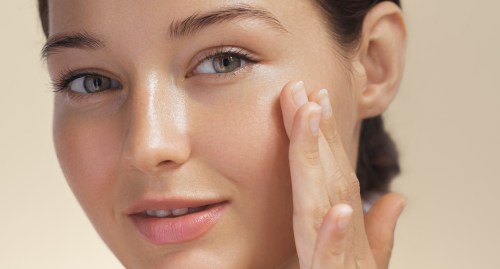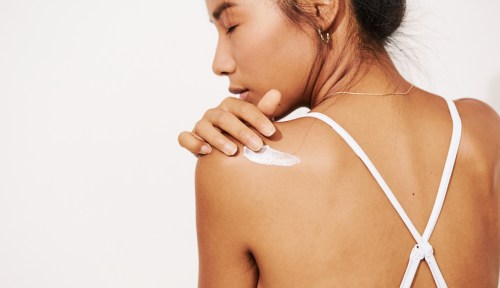Find me someone who has ever said, “Geez, having bumpy under-eye skin is SO fun…” Don’t worry; we’ll wait. Bumps under the eye area are completely normal (we’ve probably all had one at a point in time), but it doesn’t make smooth texture while bare-faced or applying makeup any less desirable or the causes of under-eye any less questionable. The good news is that most of the time, under-eye bumps are totally normal and nothing to worry about.
Experts in This Article
Dr. Singh is a board-certified dermatologist with years of experience in medical, surgical, and cosmetic dermatology.
board-certified dermatologist and clinical instructor of dermatology at Mount Sinai Hospital in New York City
- Assistant Clinical Professor of Dermatology, University of Miami School of Medicine
- University of Michigan (Graduated Phi Beta Kappa and Summa Cum Laude)
- NYU School of Medicine (AOA Honor Society)
- Former Chief Resident in Dermatology, Albert Einstein College of Medicine
Still, if you’re curious about how and why teeny bumps under your eyes appear, we spoke to board-certified dermatologists Libby Rhee, DO, Depptej Singh, MD, and Todd Minars, MD, for answers on why under-eye bumps occur and what to do about them.
What causes bumpy under-eye skin?
While a few things may cause enhanced bumps or texture under the eye, it’s important to first understand that skin has texture, which is normal. “Most times, it’s due to normal textural variations in skin, not a condition or growth pattern,” Dr. Rhee explains. “Some people are more genetically predisposed to textural accentuation, like those who genetically have wider or smaller pores.” However, other factors, including milia, syringoma, and sebaceous hyperplasia, might cause under-eye bumps Dr. Singh says.
Milia
Milia are tiny flesh-colored keratin-filled cysts that appear as flat spots under your eyes. They can occur anywhere on your face and commonly appear under (or over) your eyes. At first glance, they may appear to be pimples formed underneath your eyes, but that doesn’t mean you should try and pop them. A dermatologist should perform milia under eye treatment, so refrain from picking at them (even if it’s tempting).
“Milia are relatively easy to treat at your local skin care clinic,” Dr. Todd Minars, a board-certified dermatologist, says. “A dermatologist will use a small surgical scalpel, also known as an 11-blade, to pierce each bump and then push out the white stuff.” According to Dr. Minars, a board-certified dermatologist will make “careful, tiny incisions” to avoid scarring. So, again, it’s best to avoid taking matters into your own hands.
Sebaceous Hyperplasia
If you have under-eye bumps that aren’t milia, it could be sebaceous hyperplasia. Sebaceous glands are a normal part of the skin, but sebaceous hyperplasia can occur when you have enlarged oil glands. Because the skin is so thin underneath the eyes, they can be more visible than in other spots.
“When visible, they can create a pattern that resembles ‘chicken skin,” usually more yellow than white,” Dr. Minars explains. “This condition is challenging to treat since making one’s skin thicker is difficult. Sometimes laser resurfacing can help reduce the visibility of these glands, but this procedure creates a wound with downtime for healing and the potential for side effects.”
Syringomas
Syringomas are another potential cause of bumpy under-eye texture. Syringomas are benign growths in the sweat gland, typically around the eyelid area. Dr. Minars explains that syringomas are generally flesh-colored, larger, and fewer in number than sebaceous glands.
This Parisian Skincare Brand Is Launching in the United States for the First Time—Here’s What a Derm Wants You to Know

We’re Calling It: Cleansing Balms Are the Face Wash of the Future—Here Are 3 to Add to Your Cart

This Is the One Product That Scarlett Johansson Always Keeps in Her Purse and on Her Bedside Table

According to Dr. Singh, “Syringoma presents as sweat duct tumors and sebaceous hyperplasia are the results of enlarged sebaceous glands,” Dr. Singh says. While the word “tumor” may sound intimidating, syringomas are benign. However, they should be treated in-office by a medical professional if it’s something you want to get rid of.
Xanthelasma
Xanthelasma, or cholesterol deposits, can also cause bumps underneath the eyes. These may be called “cholesterol bumps,” harmless yellow bumps that build up underneath your skin over time. While the bumps are harmless, they could indicate an underlying condition such as high cholesterol, thyroid problems, or diabetes.
The best ways to treat under-eye bumps
The first thing to consider when treating under-eye bumps is getting to the root of the cause. “Treating these conditions varies based on their nature,” Dr. Singh explains. “Milia can often be addressed at home with the right care, while syringoma and sebaceous hyperplasia typically require professional in-office procedures.”
At-home treatments
For uneven texture under the eyes or under-eye wrinkles, Dr. Rhee recommends keeping your skin hydrated with a nourishing moisturizer and a targeted eye cream. If the bumpiness persists, you have some choices: You can talk to your dermatologist about resurfacing lasers or microneedling. Dr. Rhee explains that you can also go old-fashioned and apply cold cucumbers or cool tea bags over your eyes for temporary relief and a plump appearance. Using a smoothing primer before you apply concealer or foundation may also improve the appearance of bumps under the eye, but ultimately, it isn’t a magic wand (or a resurfacing laser) so you’ll still probably notice texture
For milia, Dr. Singh stresses the importance of avoiding at-home extraction, which can lead to more irritation and damage the delicate skin around the eyes. He recommends adding a mild retinol formula to your skincare routine for milia, which can address texture concerns over time. Of course, if you need clarification on over-the-counter retinol options (or want to explore prescription options), talk to your dermatologist for the best action plan.
In-office treatments for under-eye bumps
If you have concerns about any bumps or texture underneath your eyes, it’s always best to see a dermatologist to discuss the cause and potential solutions. While milia can be treated at home (as well as in the office), conditions such as sebaceous hyperplasia and syringomas should be handled by medical professionals.
For syringomas, Dr. Minars shares that treatment options are limited. “Each is a growth of the sweat gland, and so each one can be numbed up and removed using electrocautery,” he says. “This procedure can be tedious, and sometimes you can get marks or incomplete removal.” Dr. Minars encourages people to weigh the risks before opting for professional removal. “If you do want them treated, find an experienced dermatologist and start with one or two test spots to get an idea of how your specific skin will heal with this procedure,” he says.
As for sebaceous glands, Dr. Minars says laser resurfacing is a potential solution, as it can help reduce the visibility of the glands. Xanthelasma is another condition that a doctor should handle. Because cholesterol deposits can indicate an underlying health condition, you should speak with your doctor as soon as you develop them. The cholesterol bumps can sometimes be removed through chemical peels or surgery, but you will want to talk to a medical professional about their cause first.
Preventing under-eye bumps
Having texture around your eyes is completely natural and normal. However, if you want to improve the overall appearance of your under-eye area for smooth makeup application (or just in general), you can do so with your skincare routine. For milia, a mild retinoid can help stave off those bumps. Gently exfoliating and taking off makeup at the end of the day can also help stop milia from forming over time. Other conditions can be more challenging to treat, but many of the same tips apply for healthy under-eye skin overall: Gently exfoliating, keeping the area underneath your eye clean and hydrated, are all good places to start.
Final Takeaway
Overall, texture is a normal part of having skin. Still, if you’re developing pesky bumps that you’d rather get rid of you can start by targeting parts of your skincare routine to help your concern. And, when in doubt, talk to an expert.
Sign Up for Our Daily Newsletter
Get all the latest in wellness, trends, food, fitness, beauty, and more delivered right to your inbox.
Got it, you've been added to our email list.








